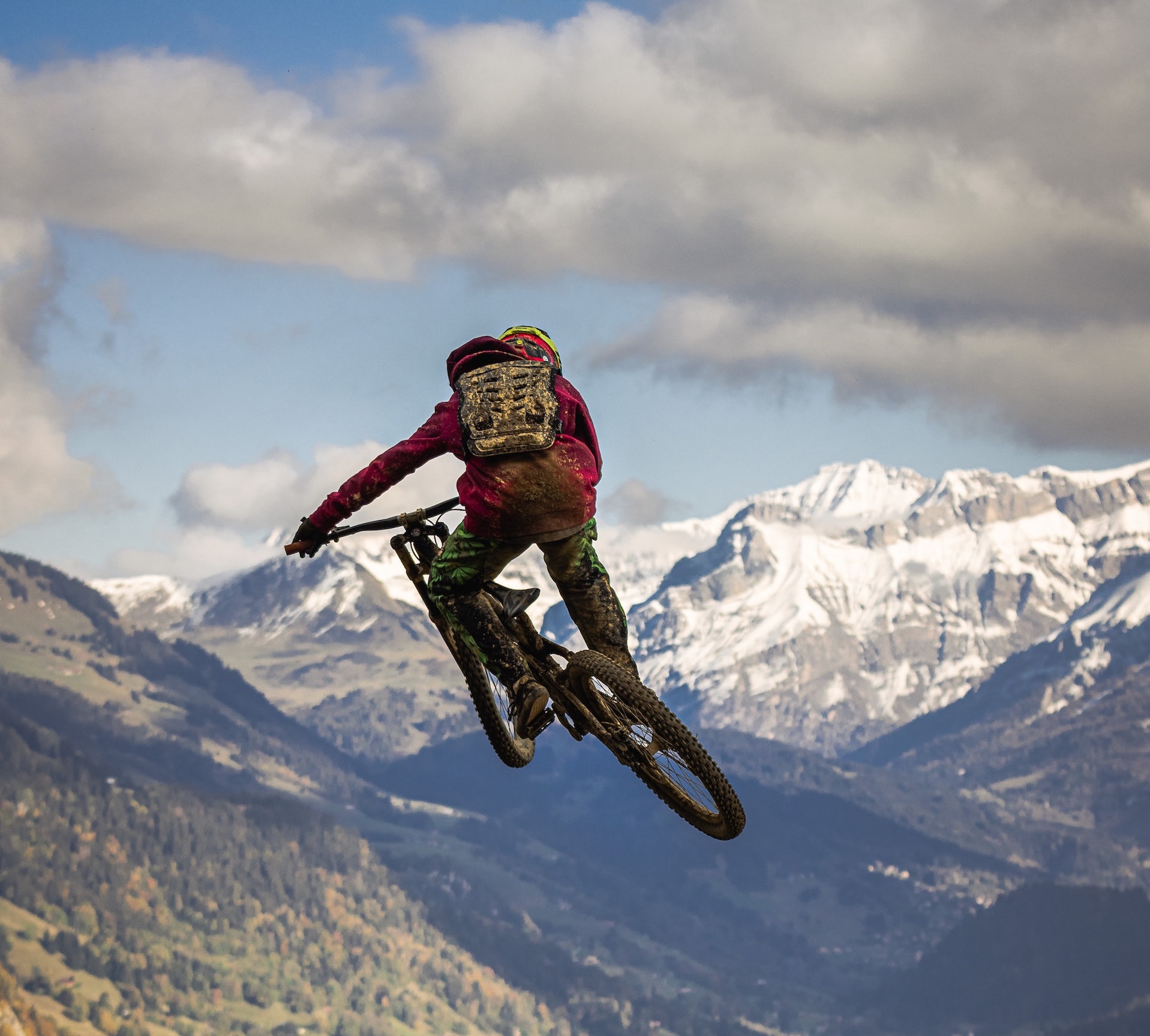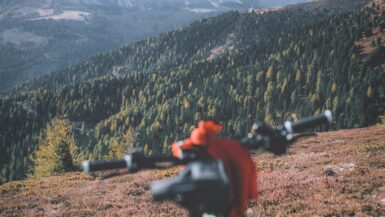Exploring the outdoors on two wheels can be an exhilarating experience. Whether you’re a road cyclist, mountain biker, or gravel grinder, every rider needs to know the unique challenges of riding in high-altitude conditions. High-altitude riding requires riders to adjust their training, modify their gear and be aware of the effects of the altitude on their body. This article will examine what techniques and gear considerations are needed to prepare and safely ride at high altitudes.
Benefits of High Altitude Riding
Training for high-altitude riding requires you to identify the rides and locations you’ll be working with. High-altitude riding can refer to cycling at elevations of over 8,000 feet and will largely depend on your local terrain. If you live in a mountainous area, you should be familiar with the lay of the land and the elevation changes.
Determining Your Body’s Needs
Before embarking on any high-altitude training, it’s essential to consider your body’s needs. Altitude can affect your blood oxygen levels, and you may need to supplement your oxygen intake with oxygen tanks. Consider the terrain you will be riding and the various altitudes you will experience. Take into account any restrictions due to altitude sickness and the need to rest more often.
Altitude Adaptation and Acclimatization
High-altitude riding can cause the body to become acclimatized over time. It’s essential to give your body time to adjust, making tackling more challenging rides easier. An altitude adaptation plan can help make the transition easier, as this will help you gradually increase your time spent in the saddle when at elevation.
Gear Considerations
When it comes to gear, you’ll want to ensure that your bike is in tip-top condition. This means checking your brakes and gears and ensuring your tires are in good shape. You’ll also want to provide adequate protection from the elements, such as a good quality windbreaker and an appropriate cycling helmet. Additionally, consider the need for nutrition and hydration, as these are especially important at high altitudes. Bring plenty of water and snacks for your ride, and ensure you stay hydrated.
Tips for Safe Training
Stay safe and aware of your limitations when training for high-altitude rides. Before you embark on a challenging ride, ensure that you have taken into account the necessary precautions and consulted with your doctor. Additionally, plan for emergencies and ensure you are well-equipped with a first aid kit and a cell phone. Finally, ensure you have informed someone of your whereabouts and plans.
Risks of High Altitude Training
High-altitude riding is a form of cycling that occurs at an altitude of 2000m or higher. This can require significantly more energy and endurance than rides at lower altitudes and is often used as part of an athlete’s training regimen. Understanding the risks associated with high-altitude riding is essential and practicing safe riding techniques is vital.
Why Train for High Altitude Riding?
High-altitude riding has many benefits for athletes seeking to increase their performance and endurance. Training for high-altitude riding can help increase the amount of oxygen taken in and make the body more efficient in dealing with extreme temperatures. This type of training can also improve an athlete’s overall condition by making them more responsive to changes in altitude.
Tips for High Altitude Training
High altitude training requires a certain level of preparation to be successful. Here are some tips for high-altitude training:
- Increase your aerobic fitness level by gradually increasing your distance and intensity of training.
- Adequate hydration is critical; drink plenty of water or electrolytes during and after your ride.
- Use lighter gears and lower resistance to reduce the strain on your body.
- Use a heart rate monitor to track your performance and adjust your intensity accordingly.
- Utilize altitude simulations for additional training.
- Wear protective clothing to protect yourself from the elements.
- Allow your body time to adjust to the new altitude.
Gear Considerations for High Altitude Riding
In addition to the tips mentioned above, it’s essential to understand the gear considerations when riding at high altitudes. Here are some suggestions for choosing the right gear for high-altitude riding:
- Choose a bike that is lightweight and has quality components.
- Consider a comfortable, supportive saddle.
- Wear protective gear such as a helmet and gloves.
- Invest in quality sunglasses to protect your eyes from the sun.
- Select a pair of cycling shoes that provide traction and durability.
- Make sure your bike has adequate brakes to stop you in an emergency.
High-altitude riding can be a great way to improve your performance and endurance, but it’s crucial to invest in quality gear and practice safe riding techniques. You can enjoy the thrill of high-altitude riding with the proper preparation and equipment.
Considerations for High Altitude Riding
When it comes to training for high-altitude riding, cyclists need to understand the physical and environmental challenges of high altitude. High-altitude riding affects the body in several ways, including decreased oxygen supply and increased physical effort. This can result in a greater risk of fatigue, dehydration, and even hypothermia. The cold temperatures, thin air, and changing terrain can add even more difficulty to high-altitude riding.
Developing Pre-Ride Strategies
To prepare for high-altitude riding, cyclists must develop strategies for efficient pre-ride preparation. This can include getting enough sleep, drinking plenty of fluids, and doing warm-up exercises. Additionally, riders should focus on their nutrition and hydration plan, ensuring that they consume the right amount of electrolytes and carbohydrates to help their bodies cope with the physical demands of high-altitude riding.
Selecting the Right Gear
The type of gear cyclists choose can also play a role in their training for high-altitude riding. Clothing should be lightweight and breathable. Bicycles need to be equipped with low-geared components, such as a low bottom bracket and low-profile handlebar stem, which will help cyclists maintain control on challenging terrain. Riding gloves, shoe covers, and a helmet are also essential for protecting cyclists from the elements. Additionally, cyclists should invest in a quality air filter, which will help to combat the thin air and reduce fatigue.
Finding the Right Training Program
An effective training program is vital to success in high-altitude riding. Cyclists need to gradually increase the intensity of their rides and allow for plenty of rest in between rides. Additionally, riders should focus on interval training to help their bodies adjust to the physical demands. While high-altitude riding can be challenging, a well-developed training program can help cyclists prepare their bodies and ensure they are ready for the task ahead.
Considerations for High Altitude Training
High altitude training presents several physical risks that need to be considered before undertaking a training regimen. Upper-respiratory infections, altitude sickness, and dehydration are all common ailments associated with high altitudes. Additionally, riders should take special precautions regarding their clothing and gear since the climate can fluctuate rapidly at such elevations.
Creating a High Altitude Training Plan
Individuals who wish to use high-altitude training to improve their performance should create a training plan considering the risks associated with high altitudes. This plan should include specific goals and strategies to help ensure that the athlete can safely train at the desired altitudes. Long-term training regimens should be planned in consultation with a physician and other experts, such as nutritionists and sports scientists. In addition to designing the training duration and intensity, riders should also ensure that they are adequately hydrated and nourished during their high-altitude training sessions.
Choosing the Right Equipment for High Altitude Training
To have a successful high-altitude training experience, riders should also ensure they are using the right gear. This includes protective clothing for cold weather and altitude-specific equipment, such as oxygen masks and supplemental oxygen tanks. It is also essential to ensure that the bike is in good working order and that riders are familiar with the terrain they are riding.
Getting Used to High Altitude Conditions
Riders should also take the time to acclimatize to the high-altitude environment before they begin their training session. This will help ensure that they are better adapted to the conditions and are less likely to suffer from any altitude-related illnesses. Riders should rest frequently and drink plenty of water during the training session.
Safety Tips for High Altitude Training
High-altitude training should always be done in a safe and controlled environment. Riders should be aware of the potential risks and always wear protective gear, such as helmets, gloves, and eye protection. They should also bring a comprehensive first-aid kit in an emergency and keep an eye on the weather so they don’t get caught in any unexpected storms. Finally, riders should stay hydrated and take regular breaks so they can remain safe and healthy during their high-altitude training sessions.
Considerations for High Altitude Training
High-altitude riding is a challenging and potentially hazardous endeavor and requires specific preparation and strategy. If you’re planning a ride above 2000 meters, it’s vital to devise a plan that accounts for the increased demands on the body caused by the lower oxygen levels at higher altitudes.
Ride Strategies for High Altitude
To protect your body from the effects of high altitude, it’s vital to adopt an innovative and consistent riding strategy. Set realistic expectations for yourself by starting your ride at a smaller size and gradually increasing your elevation over time to give your body time to adjust. It would help if you also drank plenty of fluids to prevent dehydration and planned frequent rest breaks to allow your body to recover.
Specialized Gear for High Altitude
In addition to riding strategies, having the right gear for high-altitude rides is crucial. Invest in a good quality breathing mask to protect your lungs from dust and debris, and choose clothes made from breathable fabrics. If possible, look for insulated waterproof clothing to protect against wind and rain. A wide-brimmed hat, sunglasses, and gloves can also help protect you from sun and wind damage.
Physical and Mental Training for High Altitude Riding
Physical and mental preparation is also essential to successful high-altitude riding. Aerobic and strength-training exercises can help you develop the endurance you’ll need to stay on the bike for long periods. Mental training is equally important, with visualization and positive thinking helping to keep you motivated and focused as you tackle harsh conditions.
Safety Considerations for High Altitude Training
Safety should always be a top priority when riding in high-altitude areas. Make sure to research the terrain and weather conditions before heading out, and check with local authorities to ensure you follow any regulations. It’s also a good idea to travel with a companion and carry a first-aid kit and a GPS device for navigation and emergencies.
Taking Your Riding to New Heights
Training for high-altitude riding is essential to preparing for long-distance bike riding at high altitudes. Different techniques and gear considerations should be considered to ensure a successful high-altitude biking experience. It is vital to know your limits and practice riding at lower altitudes to get acclimated to the effects of increased altitude on your body. The essential gear considerations for high-altitude biking include lightweight clothing, UV protection, and protection from the wind. Additionally, focusing on proper hydration and nutrition will go a long way in helping you reach your goals. With the appropriate preparation, training, and gear, your next high-altitude biking adventure can be successful and enjoyable.






Leave a reply